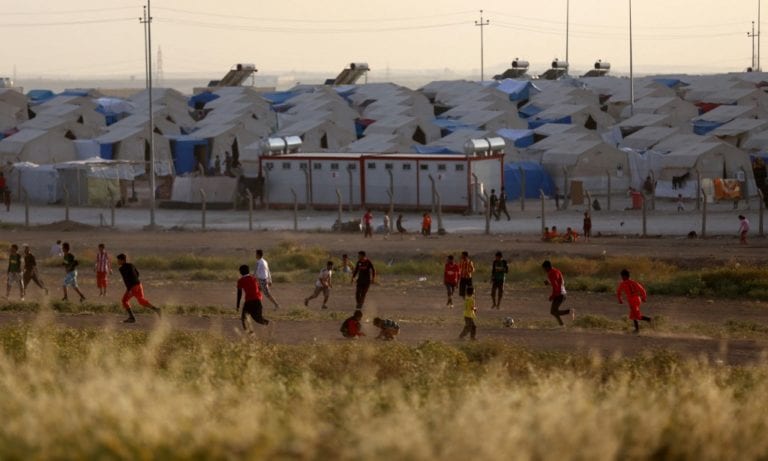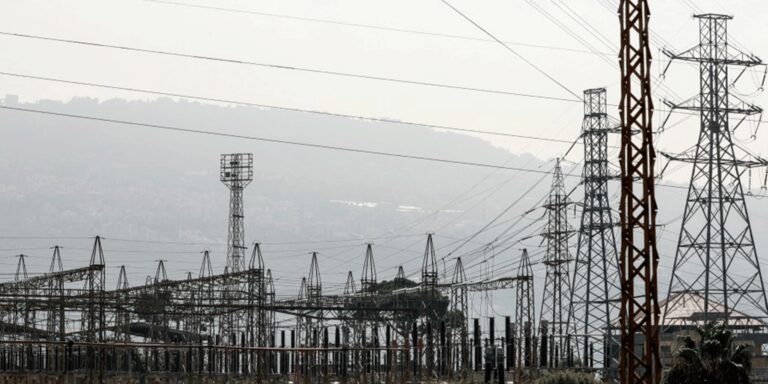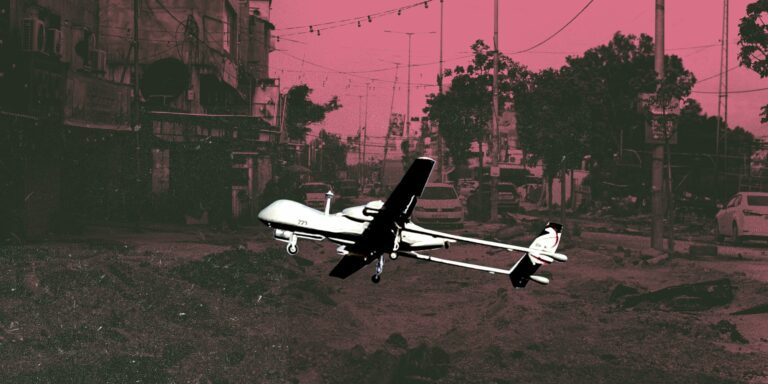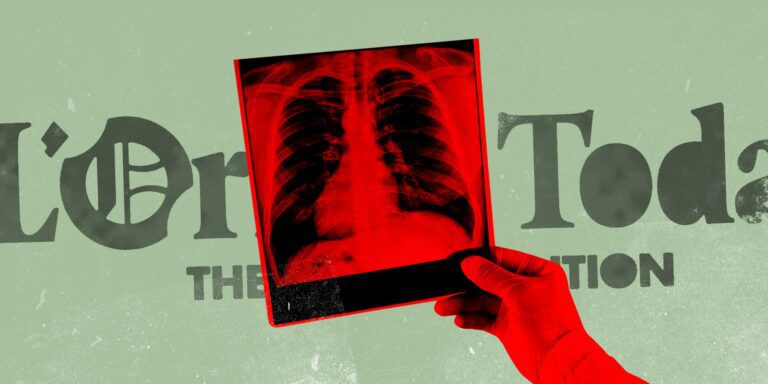Umm Rami, a government employee living in the Sadriyah district of central Baghdad, is confronted with mounds of trash whenever she leaves her office and returns home. It’s a familiar sight for most Iraqis living in the capital. Umm Rami blames the accumulation of waste on poor public services on the one hand, but also on the Baghdadi citizen’s habits on the other.
Responsibility for the growing piles of garbage is entangled between these two sides. The municipality relies on the citizen to throw waste only in the designated areas, while the citizen complains about the lack of waste containers and garbage trucks on a daily basis.
It has led to what Umm Rami has called the “shameful scenes” in the Iraqi capital.
Holy Imagery Vs. Trash Piles
Some citizens, in hopes of clean, waste-free streets, have resorted to placing images of religious symbols at the beginning of empty streets in order for others to refrain from throwing rubbish.These photos’ presence is supposed to function as a deterrent.


“The aim of these pictures is to spread prestige and fear in the hearts of people to prevent them from throwing trash in places guarded by images of imams, clerics and righteous people,” said Jaafar Abdel Jalil. So far, however, it has hardly prevented people from throwing their trash.
“Cleanliness has been lost between the municipality and its citizens, as both sides ignore the situation,” said Abdul Jalil.
“The municipality is not working to replace the old waste containers but yet has been active in raising awareness and improving cooperation, which has confused citizens about how and where to throw waste. This has led to them throwing it in places that are not meant for it, and then later burning it inside those containers, which has increased air pollution.” Sabah Al-Tamimi, a former member of the Parliamentary Services Committee, criticized the municipal services in Baghdad.
“Most areas in the capital suffer from neglect in providing waste collecting services,” she told Daraj.
“The local authorities are supposed to study the community’s needs and take on the responsibility of protecting the citizens, not the other way around. Especially not in the difficult situation the country is currently going through.”
Thorny File
The waste removal file is a “thorny issue,” said economist Haitham al-Hasani.
“In most countries in the world, waste removal has become a rudimentary matter, both near and afar. Unfortunately, Iraq has failed to take care of things so far,” al-Hasani explains.
“The aim of these pictures is to spread prestige and fear in the hearts of people to prevent them from throwing trash in places guarded by images of imams, clerics and righteous people.”
“There’s a lot of corruption in managing the waste file and the administration as a whole,” he continued.
“Many countries have properly invested in waste treatment by recycling it, thus creating a whole new industry producing fertilizers, which can be exported and bring in hard currency.”


The problem Iraq suffers from is the presence of waste in streets and alleys and the inability of the authorities to manage this. According to al-Hasani, civil servants point at a “significant shortfall in human and financial resources, as well as equipment, and machinery.”
“Treatment of waste by primitive methods poses a serious threat to public health and the environment, especially seeing the absence of a government vision and policy that truly addresses the cause of the problem,” he warned.
Media Reviews!
“The Baghdad Municipality must take full responsibility and carry out its duties,” states a directive issued by Iraqi Prime Minister Mustafa Al-Kazemi on May 9.
Kazemi stressed the need for an extensive cleaning campaign for all of the capital’s neighborhoods that should consist of removing waste and preserving green areas.
Two days later, Baghdad Mayor Alaa Maan called on the people of the capital to “support the cleaners by committing to only throw waste in designated places,” while noting: “cleanliness is a shared responsibility that aims to reveal Baghdad in a more beautiful way.”
Hassan Al-Kaabi, first deputy speaker of the Iraqi parliament, advised the mayor to stay away from the media limelight and instead focus his efforts on the alleys, areas and markets where waste has not been removed for years.
Waste Recycling Plant
The Mahmoudiya municipality in 2013 opened a waste sorting and recycling plant with a production capacity of 200 tons a day. It is the only such facility in Baghdad’s southern regions, according to director Adel Ali Muhammad.
“The main purpose of the facility is to provide a proper environment for cities to bury waste outside the city, as well as to maximize the recycling of materials such as cartons, plastics, iron and aluminum and then sell them.”
“The quantity of sorted materials has increased during the past six months,” he said. “The factory was able to sell recycled materials for 60 million dinars (some $40,000), which is a very positive return for our factory. All materials were sold by public auction.”
That is not the only possible positive outcome of seemingly useless waste.
“Gasses that develop in the dump may be used to generate power in neighborhoods and areas close to the plant,” said Sabah al Tamimi.
“In addition, food waste can be collected to produce organic fertilizers, providing jobs and aiding agriculture.”
Read Also:







